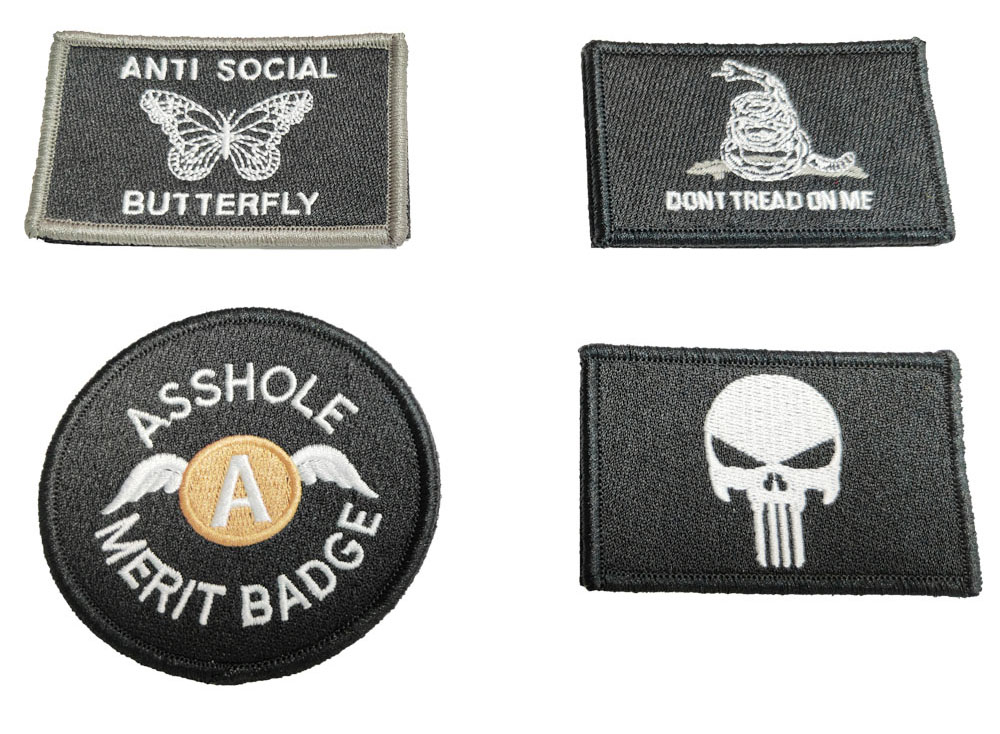Choosing the right patch backing material is crucial as it significantly affects the patch’s durability, flexibility, and application. This comprehensive guide aims to help you navigate through the options available, ensuring you select the best backing for your patches. Whether you’re looking to customize your gear, uniforms, or promotional items, understanding the nuances of patch backing materials is the first step toward creating high-quality, long-lasting patches.
Understanding Patch Backing Materials
Patch backings are the foundation of any patch, providing structure and support. They play a pivotal role in how a patch is attached to the fabric and can influence the overall appearance and functionality of the patch. Let’s explore the most common types of patch backing material and their characteristics to help you make an informed decision.

1. Sew-On Backing
Sew-on patches are the traditional choice, offering maximum durability and permanence. This type of backing requires the patch to be sewn directly onto the garment or item, making it ideal for heavy fabrics and items that undergo frequent washing. Sew-on backings are perfect for those looking for a more permanent solution and don’t mind the extra work involved in sewing.
2. Iron-On Backing
Iron-on patches come with a layer of heat-activated glue on the back, making them easy to attach with just a standard iron. This backing type is excellent for quick applications and is suitable for most fabrics except those sensitive to heat. Iron-on backings offer good durability but may require sewing for added strength over time, especially on items that are washed regularly.
3. Velcro Backing
Velcro-backed patches are incredibly versatile, allowing you to remove or interchange patches as desired. This backing consists of two parts: the hook side, which is attached to the patch, and the loop side, which is sewn onto the garment. Velcro backings are ideal for military uniforms, tactical gear, and any situation where you might want to swap out patches frequently.
4. Adhesive Backing
woman wearing blue denim faded jacket
Adhesive-backed patches are the simplest to apply, featuring a sticky back that can be attached to any surface by simply peeling and sticking. While incredibly convenient for temporary applications or promotional items, adhesive backings are not recommended for items that are washed or used outdoors, as the adhesive can weaken over time.
5. Magnetic Backing
Magnetic backings are a non-invasive option, perfect for attaching patches to metal surfaces without any adhesive or sewing. These backings are best suited for decorative purposes on refrigerators, cars, or any metallic surface where you’d like to add a bit of flair without permanence.
Choosing the Right Backing for Your Patch a close up of a jacket with patches on it
Outdoor Use: Patches intended for outdoor gear, such as camping equipment or outerwear, benefit from sew-on or Velcro® backings, which can withstand elements like rain, mud, and constant sunlight without peeling away.
High-Temperature Environments: For items used in high-temperature environments or that require high-heat industrial washing, sew-on backings are essential to prevent melting or detachment.
Final Thoughts
Custom patches are a powerful way to express identity, showcase creativity, or promote a brand. Choosing the right patch backing material is essential to ensure your patches look great, last long, and meet your application needs. Whether you opt for the traditional sew-on method, prefer the convenience of iron-on, require the flexibility of Velcro, or need the temporary solution of adhesive backings, your choice will set the foundation for your patch’s success.
For those looking to create high-quality custom patches with the perfect backing, Anything Chenille is your premier destination. From the initial design to the final product, their team ensures that your patches not only meet but exceed your expectations. Choose Anything Chenille for patches that truly stand out.
Post time: May-25-2024

